The campaign of 1943 on the Russian front: a bet on a "draw"
Generals offer active defense
Starting military planning for the 1943 campaign of the year, the German high command fairly soberly assessed its forces and means. It was clear that the Wehrmacht could no longer conduct large offensive operations with far-reaching goals, as during the campaigns of 1941-1942.
The armed forces suffered heavy losses in manpower and equipment. It was extremely difficult to restore the regular strength of the divisions. There was an acute problem of lack of experienced commanders and technical specialists. The situation in the West steadily worsened. The campaign in North Africa was lost. The enemy was preparing to land in Italy. This required a build-up of forces in the Mediterranean. There was no hope for the demoralized Italians, who were beaten both in Russia and in Libya. In Italy there was a ferment directed against Mussolini. Rome called for help. The submarine war was lost: the Americans riveted transports, destroyers and aircraft carriers in a conveyor way, restoring tonnage fleet faster than Admiral Dönitz's wolves drowned them.
The air war was lost. Anglo-American strategic aviation reached Berlin and the most remote regions of the German Empire. Large massive enemy raids have become commonplace for the Reich. True, these raids did not interfere with the fight with the Russians. The combat potential of the Wehrmacht did not decrease. Industry went underground, the army and the people were betrayed by the Fuhrer. The civilian population suffered from the bombings.
Therefore, the generals recommended that Hitler switch to strategic defense on the Russian front and a war of attrition. If necessary, shorten the front line, maneuver, conduct limited offensive operations and counterattacks in certain sectors of the front. Enjoy better combat training of the Wehrmacht. As a result, grind the Red Army, bleed the Russians and disrupt the upcoming general offensive of the enemy. Then transfer the remaining divisions to the West to repel a possible offensive by the Anglo-American troops.
So, Manstein believed that the Russians would again try to recapture the Donbass. He proposed to concentrate large forces in the rear of the northern wing of Army Group South, wait for the Russians to strike in the Donbas direction, wear down the enemy with stubborn defense, make a planned and systematic withdrawal from the Donets Basin, letting the enemy through to the Sea of Azov and deliver a sudden powerful blow from the northwest . Thus, the Germans could defeat the strong strike force of the Red Army, and for a while it would lose its offensive capabilities. It is clear that the Fuhrer did not like such an adventure with the abandonment of the Donbass.
The German generals no longer expected to defeat the USSR, but hoped that the Russian army would bleed to death and lose the ability to conduct major offensives. There was hope for a "no man's result" and a separate peace with Stalin. As a last resort, a number of generals were ready to sacrifice the Fuhrer, and make peace with the West, and fight Bolshevism together.
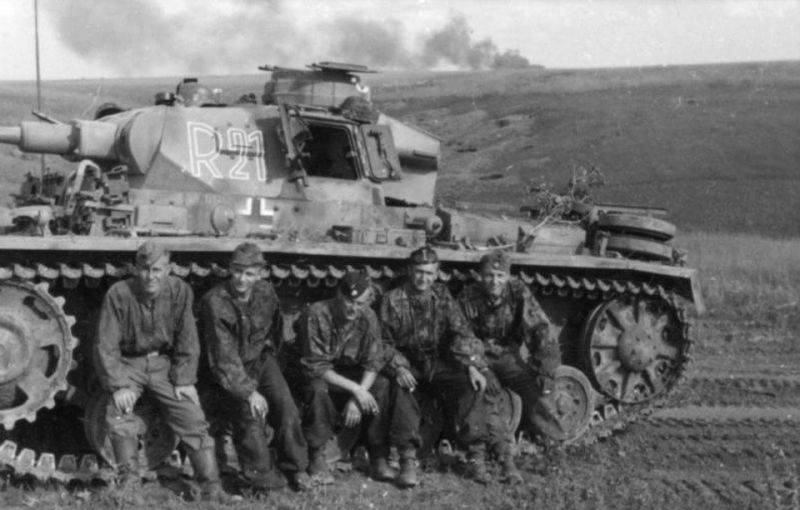
Tank Pz. Kpfw III of the SS division "Das Reich" and its crew on the Kursk Bulge
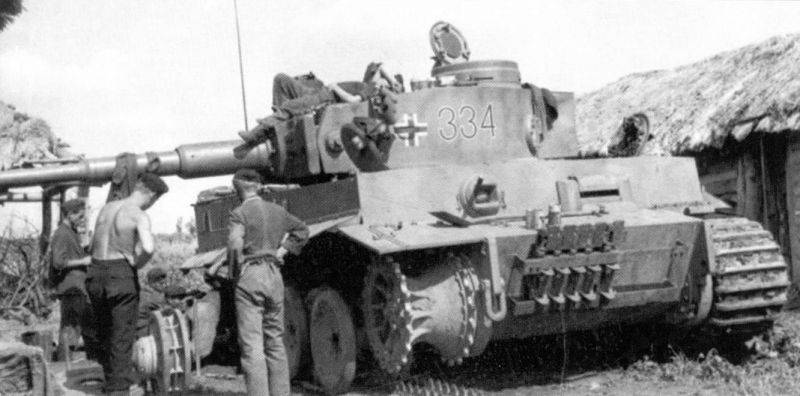
German tankers repair the undercarriage of the Tiger tank during Operation Citadel
Kursk ledge
Hitler's attention was attracted by Manstein's idea, which was not realized until the beginning of the spring thaw, to liquidate the Kursk ledge, occupied by Russian troops, which jutted out strongly to the west. This bridgehead lengthened the German front by almost 500 km and required large forces to hold the front in this direction. In addition, the arc intercepted the railways that went from the area of Army Group Center to Kharkov. Also, the ledge could become a convenient springboard for the Russian offensive on the northern flank of the South group and on the southern flank of the Center group. On the other hand, by cutting off this ledge, the Germans could destroy large enemy forces.
On March 13, 1943, the Fuhrer signs Operational Order No. 5 on a preemptive strike against the enemy. Hitler proposed "preempting their offensive in certain places in order to impose their will on them, at least on one of the sectors of the front." Such a site was at the front of Army Group South. In the remaining sectors, the main task was to bleed the advancing enemy. Army Group "North" was preparing an operation in the Leningrad direction, the "Center" and "South" groups planned to defeat the Russians on the Kursk ledge. Army Group A held the Kuban bridgehead and allowed forces to be released for other fronts.
Previously, Hitler wanted to conduct a number of private operations in the southern direction. On March 22, the command of the "South" group was instructed to develop the "Hawk" plan, so that the forces of the 1st Panzer Army and the Kempf group would defeat the Soviet Southwestern Front with a strike on Kupyansk. Two days later, the Fuhrer instructed Manstein to think over a larger option, code-named "Panther", with the aim of defeating Russian troops in the area southeast of Kharkov with the forces of the 1st and 4th tank armies, as well as the destruction of the Russian front on the line of the Seversky Donets.
Meanwhile, among the high command of the Reich there was no consensus on whether it was necessary to advance in the East at all. The chief of staff of the ground forces (OKH), General Zeitzler, who was developing the plan for the Kursk operation, was completely in favor and proved that success was guaranteed, for this only 10-12 tank divisions were needed. The command of the group "South" also supported this operation. The headquarters of the High Command of the Wehrmacht (OKW), represented by the chief of operations department Jodl, expressed doubts. He believed that a big offensive would uselessly burn up the reserves needed for defense in France and the Mediterranean theater.
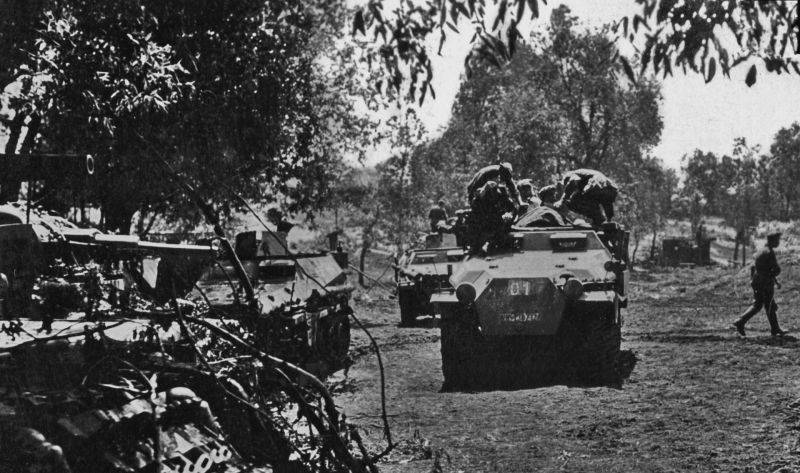
German soldiers are preparing for battle an armored personnel carrier Sd. Kfz. 251/7 Ausf. C. In the frame of armored personnel carriers Sd. Kfz. 250/5 Ausf. A. On the left are two command tanks Pz. Bef. wg. III Ausf. H. Operation Citadel
Hitler, who considered military plans in terms of grand strategy, politics and economics, needed a resounding victory to strengthen the shattered authority of the Reich, inspire the allies, frighten the enemies, strengthen the faith of the army and people in the invincibility of the Reich and the infallibility of the Fuhrer.
On April 15, 1943, the German headquarters made the final decision by issuing operational order No. 6. On April 28, the troops of the Center and South groups were to be put on 6-day readiness for Operation Citadel. The initial date of the operation was set for May 3. The Germans understood that the time factor was playing against them: the Russians pulled up the rear, made up for losses, created new formations and strengthened the defense. They hoped to catch the enemy at the "stage of weakness", to force them to throw into battle the mobile formations that had not completed the formation and replenishment.
The German offensive was given decisive importance. It was to end in a quick and decisive victory. Therefore, in the direction of the main strikes, they planned to use the best formations, commanders and weapon, a large amount of ammunition. To break into the Russian defenses with a "one blow", the maximum massing of strike forces was carried out in a narrow area in order to create an overwhelming superiority in forces and means.
Already on the fourth day of the operation, the German divisions were to meet east of Kursk, surrounding the main forces of the Russian Central and Voronezh fronts. In the event of such success, Operation Panther would immediately begin - a strike from Kursk to the southeast with the aim of destroying the Southwestern Front. Then the operation "Hunting for a bear" would follow - the German strike on Leningrad.
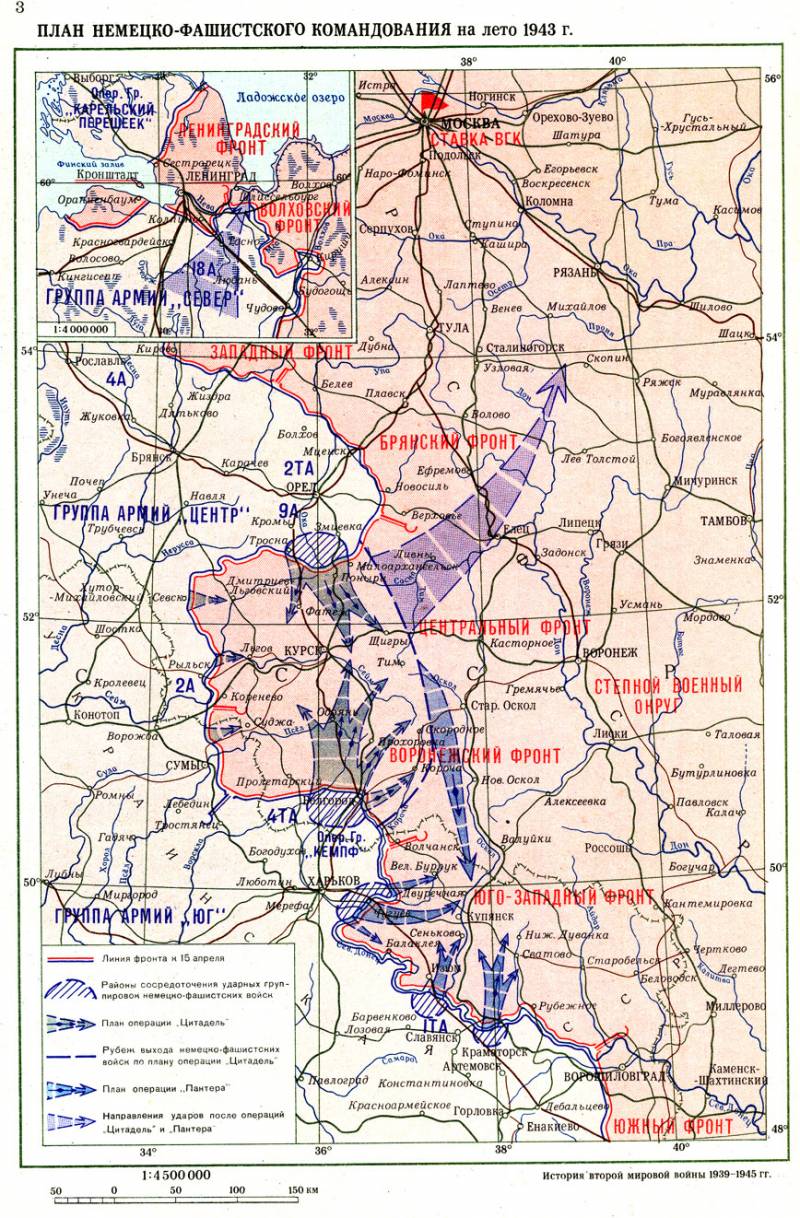
Total mobilization
On paper, everything looked beautiful. But a lot of work was required: to rivet the best weapons, a lot of ammunition and recruit soldiers.
Back in January 1943, the Fuhrer was forced to start a total mobilization: all men aged 16 to 60 years old and women from 17 to 45 years old had to register for military work. That is, Hitler wanted to replenish the army with German workers, and in their place to call on the rest of the citizens and women who until that time had nothing to do with the military-industrial complex and worked or served in the civilian sector. Through the redistribution of labor resources, a significant increase in the employment of women, men were released for the front, and military production expanded. As a result of this mobilization, 3,1 million people (most of them women) were registered by the end of March.
They also massively began to use foreign workers in industry and agriculture, who were massively driven away from the occupied regions by “ostarbeiters” (German: Ostarbeiter - “worker from the East”), and prisoners of war. A reinforced conscription began from the occupied territories. Poles, Czechs, Slovaks were thrown to the front, prisoners of war (Vlasovites) were recruited. The number of formations of "eastern troops" and "volunteers of auxiliary service" reached 450 thousand people.
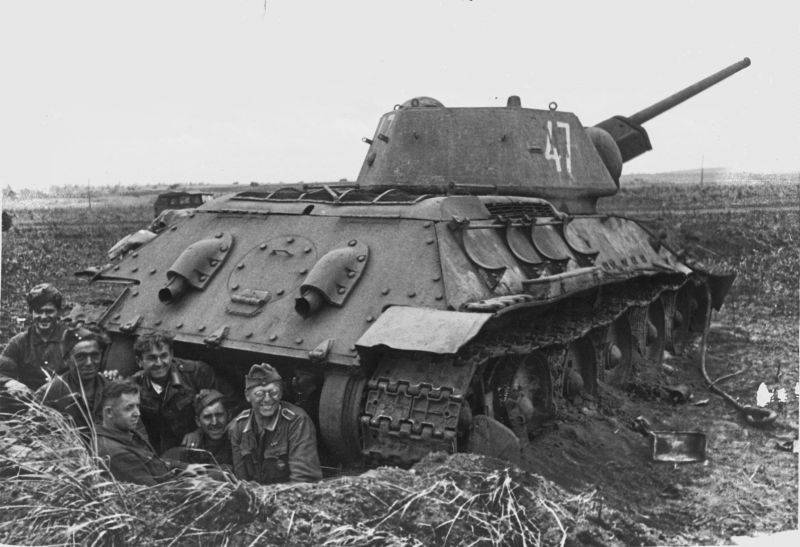
Panzergrenadiers in cover behind a destroyed Soviet T-34 tank on the Kursk Bulge
Germany was finally, in the fifth year of the Second World War (since 1939), put on a war footing. There was a mobilization of military-economic resources, redistribution of industrial capacities, raw materials, fuel and energy in the interests of the military-industrial complex. Many branches of peacetime were curtailed. If in 1942 the share of military products was 26% of all industrial production, then in 1943 it increased to 38%.
The demand for unconditional surrender, which was put forward in Casablanca in January 1943 by the Anglo-Saxons, caused great indignation in German society and the army. The Germans realized that the enemy would wage war until the complete occupation of Germany, and now they intended to fight to the end.
The measures taken to mobilize human and material resources allowed Germany to restore the power of the Armed Forces. In the first half of 1943, the ground and air forces managed to form 50 divisions. Compared with 1942, the production of tanks increased almost 2 times, aircraft - 2,2 times, guns and mortars - 2,3 times. The production of anti-aircraft and anti-tank guns, machine guns increased, and the production of ammunition was increased.
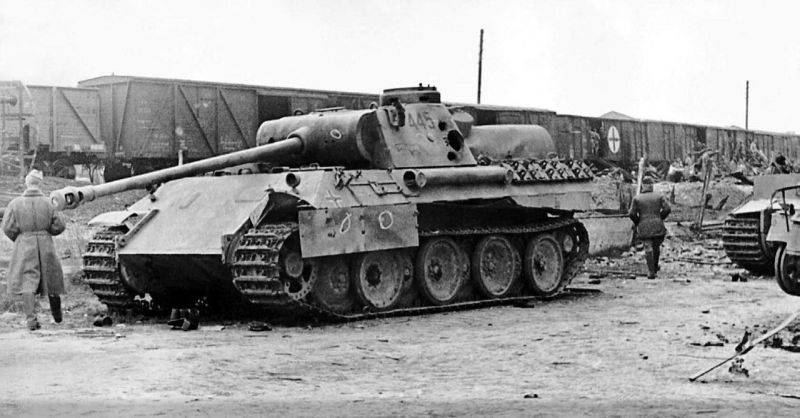
German tank "Panther" Pz. Kpfw. V ausf. D of the 51st tank battalion (Pz. Abt. 51), shot down during the fighting on the Kursk Bulge. The vehicle was hit by 76-mm armor-piercing shells hitting the left armor plate of the turret. The tank is at the collection point for emergency vehicles before being sent for smelting. Karachev area
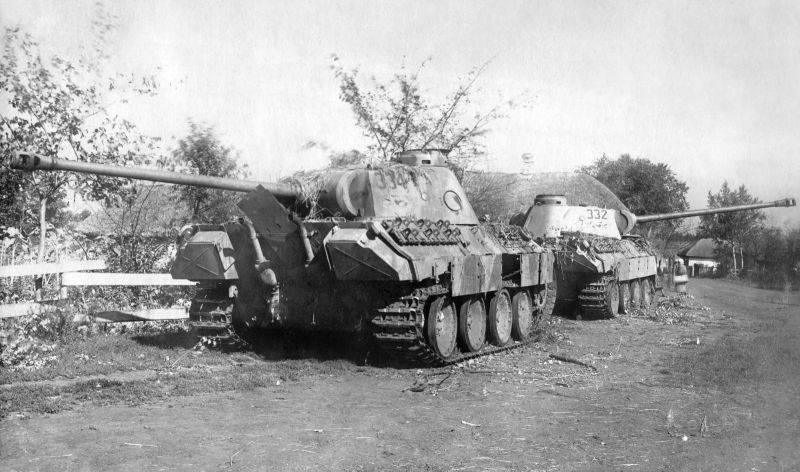
Tanks Pz. Kpfw. V ausf. D "Panther" of the 51st tank battalion, abandoned on a rural street near Kursk. The battalion was part of the 39th Tank Regiment of the 10th Tank Brigade. During Operation Citadel, the 10th Tank Brigade was attached to the Panzergrenadier Division "Grossdeutschland"
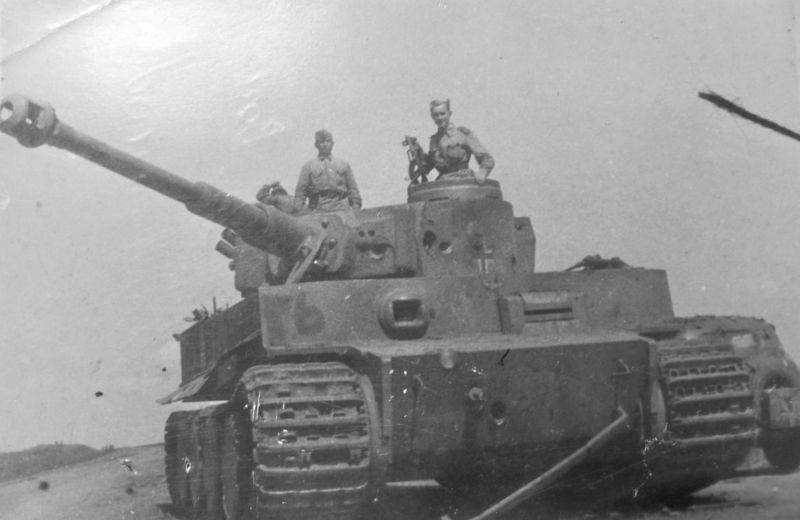
Soldiers of the Red Army on the armor of the German heavy tank "Tiger", lined up on the Kursk Bulge
To be continued ...
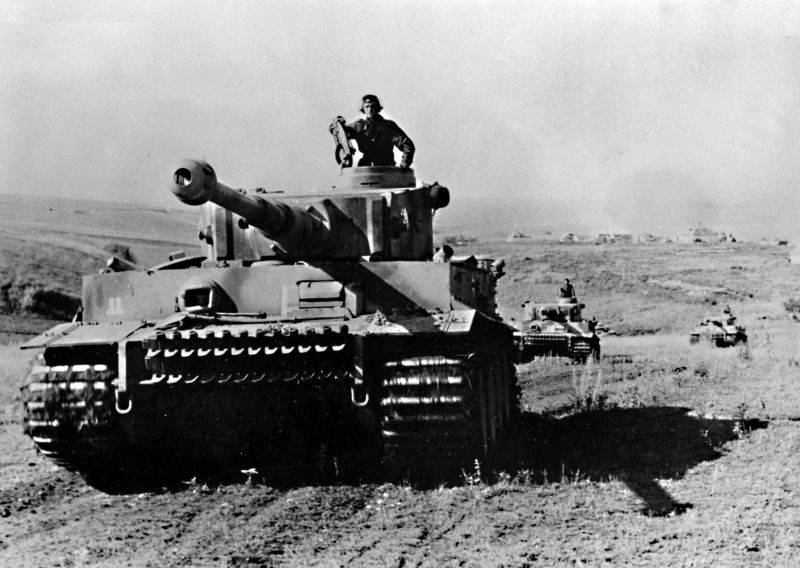
Information